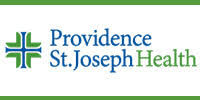- May 15,2025 | ISSN 1940-6967
- The National Association Of Medical Doctors
Featured Sponsors
House Budget Bill Floats Medical School Cuts, Raising Physician Concerns
By Patsy Newitt
A sweeping budget reconciliation bill progressing through the U.S. House of Representatives has sparked serious concerns among teaching hospitals and physician leaders, who warn that the legislation could jeopardize the next generation of physicians.
According to a news release from the Association of American Medical Colleges, the proposed cuts to federal student loan programs and public service loan forgiveness are seen as a threat to medical education accesss and the already strained physician workforce.
Dubbed the “One Big Beautiful Bill Act,” the package narrowly advanced out of the Republican-led House Budget Committee in a 17-16 vote on May 18. It is now under review by the House Rules Committee, with a potential floor vote as early as May 21.
In addition to loan restructuring, the bill proposes sweeping cuts to Medicaid and other healthcare safety-net programs.
Here are four things to know:
1. The bill proposes ending the federal Grad PLUS loan program for graduate and professional students, including those in medical school. Grad PLUS currently enables students to borrow up to the full cost of attendance, covering both tuition and living expenses. The program would be closed to new borrowers beginning in the 2026-2027 academic year. Existing users would retain access through 2029-2030.
2. Federal student loans for graduate and professional students would be capped at $150,000, well below the average U.S. medical school debt of $206,924, the AAMC said in 2023. More than 70% of graduating medical students carried substantial debt that year, indicating that the proposed cap could leave many future physicians underfunded during their training.
3. The bill also seeks to narrow eligibility for Public Service Loan Forgiveness by disqualifying payments made during medical residency from counting toward forgiveness. This move could deter residents from pursuing careers in underserved areas or lower-paying specialties that rely on PSLF incentives.
4. Supporters of the bill claim these measures, which are expected to save $35 billion by 2034, will incentivize medical schools to reduce tuition and limit taxpayer burden. But physician leaders argue the consequences could be far more damaging.
“Eliminating or restricting these critical programs would undermine the future physician workforce and ultimately make it harder for patients in communities nationwide to get the care they need” David Skorton, MD, AAMC president and CEO, and Danielle Turnipseed, chief public policy officer at the organization, said in a May 1 statement.
Articles in this issue:
- The Hospital Financial House Of Cards Is Crumbling
- What’s Driving Medical Students Away From Primary Care?
- Healthcare Is America's Largest Escape Room
- Physicians Turn To Locum Work: What Does It Mean For Healthcare?
- Low- And No-Calorie Sweeteners Aren’t The ‘Dietary Boogeyman’
- House Budget Bill Floats Medical School Cuts, Raising Physician Concerns
- Creatine Is All the Rage. Should You Take It?
Top Physician Opportunities
Journal of Medicine Sign Up
Get the Journal of Medicine delivered to your inbox.
In This Issue
- The Hospital Financial House Of Cards Is Crumbling
- What’s Driving Medical Students Away From Primary Care?
- Healthcare Is America's Largest Escape Room
- Physicians Turn To Locum Work: What Does It Mean For Healthcare?
- Low- And No-Calorie Sweeteners Aren’t The ‘Dietary Boogeyman’
- House Budget Bill Floats Medical School Cuts, Raising Physician Concerns
- Creatine Is All the Rage. Should You Take It?
Archives
Masthead
-
- Editor-in Chief:
- Theodore Massey
- Editor:
- Robert Sokonow
- Editorial Staff:
- Musaba Dekau
Lin Takahashi
Thomas Levine
Cynthia Casteneda Avina
Ronald Harvinger
Lisa Andonis
Leave a Comment
Please keep in mind that all comments are moderated. Please do not use a spam keyword or a domain as your name, or else it will be deleted. Let's have a personal and meaningful conversation instead. Thanks for your comments!















*This site is protected by reCAPTCHA and the Google Privacy Policy and Terms of Service apply.